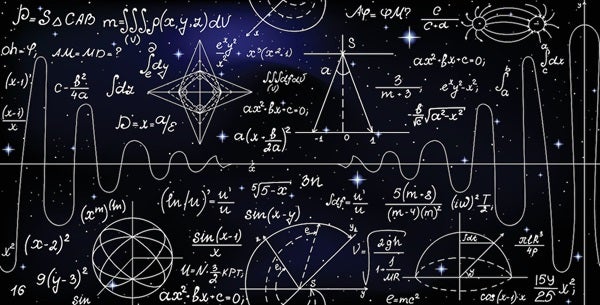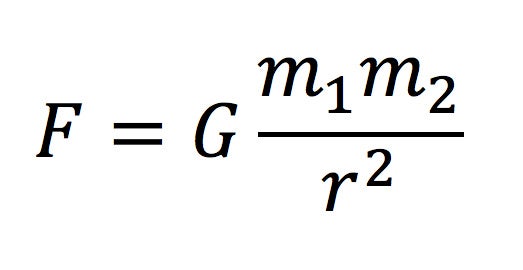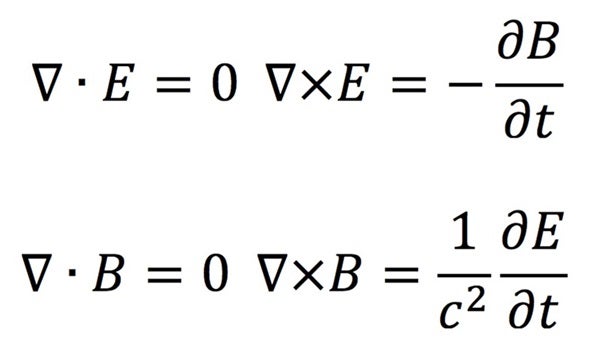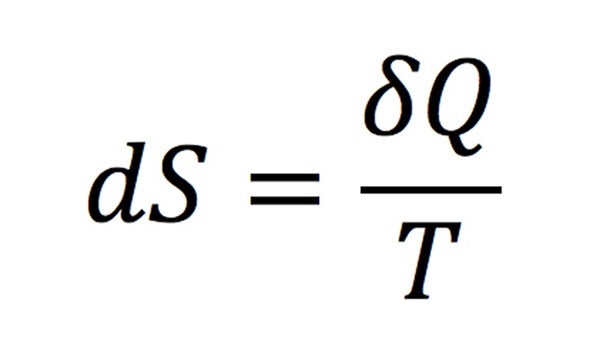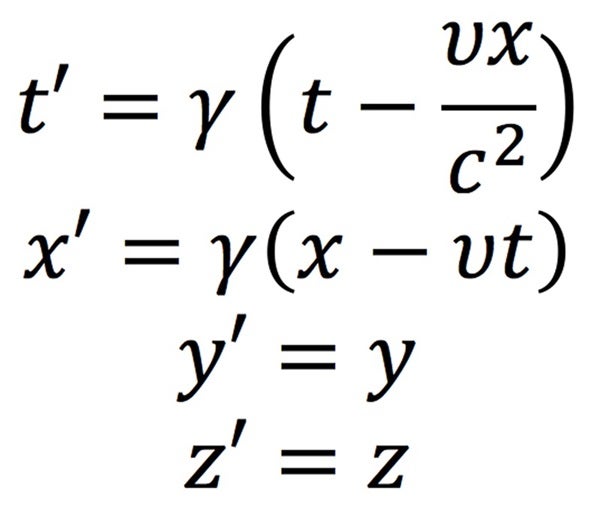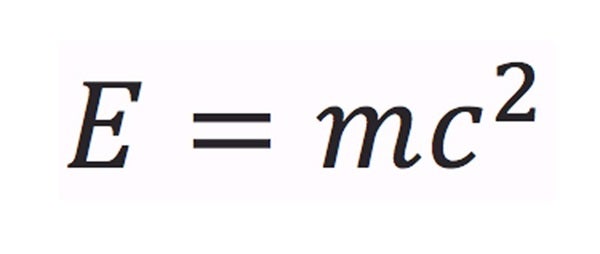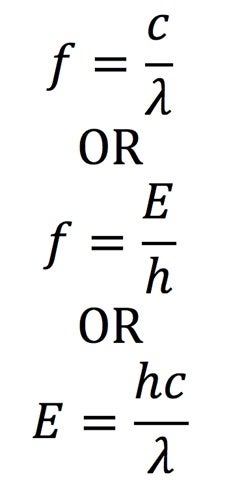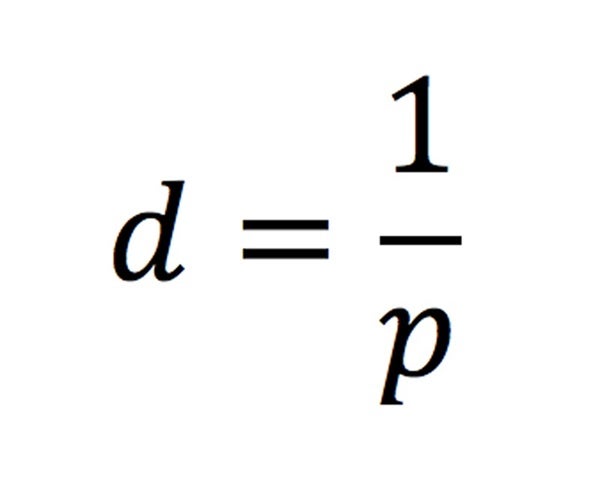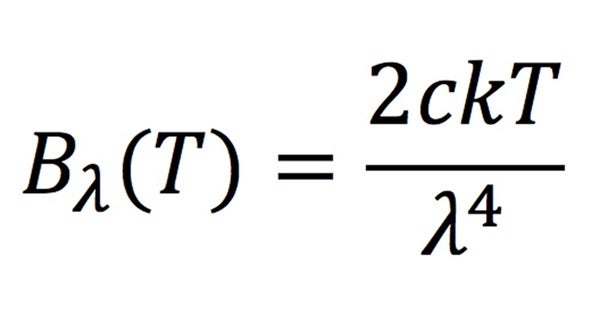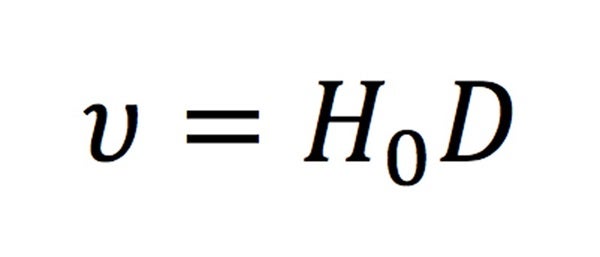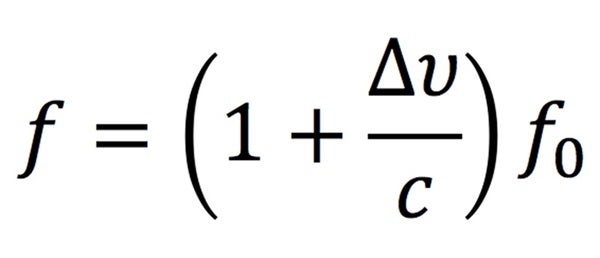Math is the engine of the universe, driving and dictating all actions, interactions, transformations, and appearances, including yours. Equation-based laws underlie physical systems, and the physical systems astronomers care about are ones composed of stars, planets, galaxies, gases, plasma, strange subatomic particles, dark matter, dark energy, and anything else you might find if you ventured to space. Although all equations are beloved and have their own fan bases, some equations are more fundamental and wide-reaching than others.
But let’s all be honest with each other: It’s not for me to say which 10 formulas are the top 10. So these are 10 of the top equations, in no particular order. And I don’t think you could find a scientist would argue that these don’t deserve applause for their role in the history of astronomy as well as in its future.
Newton’s law of universal gravitation
Newton’s law of universal gravitation states that anything with mass attracts any other thing with mass. The closer the two objects are together, the more attraction they feel (a phenomenon with which you may be familiar). No matter how far apart they become, the attraction never completely disappears.
Maxwell’s equations
Maxwell’s equations are a set of equations that describe how electric and magnetic fields come to exist, as well as how they interact with each other, electric charges, and electric currents. Perhaps most famously, they explain why light — which is combination of electric and magnetic fields — is in the universe in the first place, as well as state that a changing magnetic field creates an electric field and vice versa.
Second law of thermodynamics
The second law of thermodynamics is the reason the world is in disarray. Well, not exactly. But it states that the entropy — a quantitative measurement of disorder — cannot decrease. The universe as a whole must constantly become more and more disorderly over time.
Special relativity and general relativity
Special relativity tells us that no privileged reference frames exist. If I am traveling at 60 mph (100 km/h), and you are standing still, our difference in velocity is 60 mph. But I could just as well imagine that I am standing still, and you’re the one who is going 60 mph. Though special relativity may seem rather simple, it has major (and confusing) consequences: The speed of light is the same all the time, and time moves more slowly and lengths contract for those traveling fast. If you apply special relativity to gravitation, you get general relativity.
Mass-energy equivalence
Mass-energy equivalence says an object’s mass describes how much energy is locked up inside it. A small amount of mass is equal to a huge amount of energy, and it can transform into that amount of energy — which it does in stars, nuclear power plants, and atomic bombs.
Planck-Einstein relation
Similarly, you can find out the energy of a light wave. The shorter a photon’s wavelength, the more energy it has. Gamma rays are the most energetic light waves, while radio waves are the least energetic. We can harness sunlight’s inherent energy with solar panels.
Parallax
An object’s parallax is how much it appears to move against a more distant background when you view it from different locations. Consider a refrigerator left in a field in front of a forest. If you’re driving along, and you view it as you come up on it, the arrangement of trees behind it is slightly different from the arrangement of trees when you are passing it. The parallax formula would allow you to use that difference to calculate how far away the refrigerator is. While the fridge’s distance may not be important, the distances to other stars is.
Rayleigh-Jeans Law
Any object with a temperature (which means all objects) emits radiation. The Rayleigh-Jeans Law says that if you know the temperature of the star, planet, or human being, you can find out how much electromagnetic energy it is putting out at any given wavelength. This law explains why the Sun appears yellowish: Its peak radiance is in the yellow-orange part of the visible spectrum. You, on the other hand, peak in the infrared.
Hubble’s law
Hubble’s law tells us how fast the universe is expanding and, specifically, how fast a galaxy at a given distance is running away from us. This is a good equation to help realize how big the universe is and how tiny a speck you are.
Doppler effect
Because of the Doppler effect, if a star is emitting yellow light, but it’s coming toward you, those light waves will be squished together and will appear slightly bluer. If the star is zipping away from you, it will appear slightly redder because the motion will stretch its light waves out. Galaxies carried away by the expansion of the universe, stars in other spiral arms of the Milky Way, gas orbiting other galaxies’ centers — the Doppler effect changes all of their light, from our perspective. If astronomers want to find out the true wavelength of what they’re viewing, they must take the Doppler effect into account. If they know the true wavelength, they can calculate how fast the object must be moving and in which direction.
[Editor’s note: This article was updated Oct. 26, 2023.]

